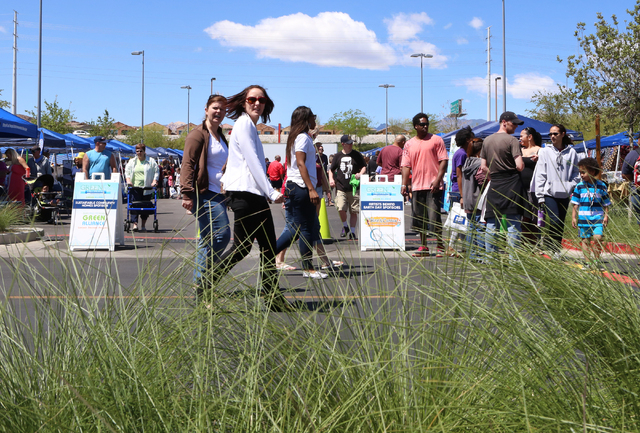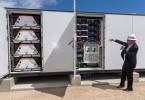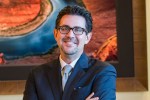Boom or doom: 10 years of ‘An Inconvenient Truth’
I often get frustrated writing this Green Living column as I try to walk the fine line between optimistically suggesting changes to lower our carbon footprints and proclaiming that “We are doomed.”
The reality is that our timeline for making changes only gets shorter. Nonetheless, there finally may be some good news.
The warnings
Ten years ago, millions of viewers — myself included — were taken aback by the easily understandable scientific graphs and images presented by Al Gore in the Academy Award-winning documentary “An Inconvenient Truth.”
While many had contrasting “beliefs” and reactions about the man and the science, the rest of the world slowly took notice. I remember sitting silently with my teenage daughters after the movie had finished, thinking, “Crap, we are doomed.”
Granted, Gore was not the first (or the only) to sound the alarm. Climatologists and other related scientists around the globe have been warning that the Earth is warming faster than its natural cycle for some time now. And the evidence that this is due to burning of fossil fuels is indisputable.
Rachel Carson’s courageous “Silent Spring,” published in 1962, raised questions about our impact on nature. It was 1979 when former President Jimmy Carter installed the first solar panels on the White House. That’s nearly 40 years ago!
Getting Americans and the rest of the world on board was (and still is) a daunting task. Two main reasons are the well-funded opposition and the resistance of humans to change, especially if it is “inconvenient.”
Inconvenience
At the time I saw Gore’s documentary, we ran a local Japanese restaurant in Henderson. We flew fish in from all around the world, used styrofoam to-go containers and threw away gallons of vegetable oil and wasted food every week. Hardly the image of an environmentalist!
Out of guilt, perhaps, I signed up for the opportunity to be trained by Gore to give the same talks he did, on a local level. In the following years, I made more than 70 presentations to schools, business organizations, government organizations and churches in Southern Nevada, California and Japan.
I had no idea how difficult just having conversations about our impact on the planet could be. The more I talked the more I learned. First, I had to make many changes myself if I thought anyone would listen. Second, the topic was a complicated, multifaceted challenge and there were rebellion dogs at every step.
While the original presentation was not so hopeful, it did offer potential solutions such as renewable energy, recycling and conservation. Renewable energy was still quite expensive and often times I’d hear comments of discouragement and blame.
During the Q&A sessions, many would comment that even if they did everything they could to lower their personal impact, without change in big business and government their efforts felt in vain.
Our challenge
Last month marked the 10-year anniversary of the release of “The Inconvenient Truth,” and the bad news is that Al Gore was right (much to his chagrin, I’m sure). The data on global average temperatures and CO2 has continued to rise, with 14 out of the past 15 years being the hottest on record and each month beating the last with hotter average temperatures.
Storms are stronger and longer, forest fires and droughts have increased, and high tides now fill the streets of Miami with ocean water on a regular basis.
While I disagree that our individual efforts are in vain, the frustration is valid.
Without all governments backing needed changes, we have a long haul. Without amazing leaps forward in technology, our path is slow.
Without big businesses making systemic changes and retiring old, unsustainable paths to energy production, our battle is tough.
However, individual commitment which can lead to social change. And social change can change everything.
What a difference a decade makes
As promised, there is good news.
In April, more than 170 countries gathered at the U.N. in New York on Earth Day to finally sign a climate change treaty. While it is only a beginning — and many say it is too little, too late — at least it finally demonstrates unified global intent, especially considering it has been 24 years in the making, since the first Earth Summit in Rio.
On a Sunday in mid-May, Germany powered almost 100 percent of its country’s energy from renewable sources for the first time. In the same month, Portugal completely powered the entire country’s energy for more than four days with renewable sources.
In 2000, the best projection for wind installations by 2010 was 30 gigawatts. The actual amount was more than 400 GW. For solar it was projected that a mere 1 GW per year could be installed, however, last year 58 times that was installed. With the speed of installations and the cost of solar reducing 10 percent per year for the past 30 years, a renewable future is within reach.
More recently, Saudi Arabia’s oil giant, Saudi Aramco, announced it will increase the production of crude oil to the world markets. This may not sound like good news for our climate, however, typically this is not the tactic to take while oil prices are low.
According to foreign affairs experts, this can be seen as a sign that the kingdom is reacting to the world moving beyond oil. As city after city and country after country start taxing carbon as incentives for cleaner, renewable fuels, the Saudis most likely do not want to be left with stranded assets (oil left in the ground unsold).
These are all signs of a momentum in the right direction. This does not mean that enough is being done fast enough. However, things are moving despite resistance.
Our most valuable resource
We do have another valuable resource often not spoken enough about. When Neil Armstrong first step foot on the moon, the average age of the systems engineers in NASA’s mission control room in Houston was 26. That means they were 18 years old just eight years earlier, when they heard President Kennedy’s incredible proposal to send a man to the moon. They made it happen!
I was fortunate this week to be at a local graduation and hear the voices of our future. I remain confident that supporting the education of any person wanting to learn more valuable skills to help us live sustainably on this planet tops the list of green living actions.
Mary Beth Horiai has split her adult life between Japan and Southern Nevada. In Las Vegas, Horiai works for the nonprofit Green Our Planet. A graduate of UNLV, she was trained as a speaker for The Climate Reality Project and also teaches part-time at College of Southern Nevada. For more information and links to additional resources relating to this column, visit www.driverofchange.net.





























